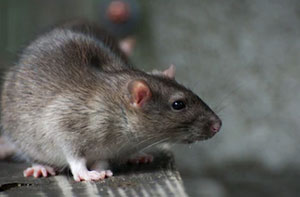Is Ultrasonic Pest Control Effective? Ultrasonic pest control gadgets have gained popularity for deterring pests like rodents and insects, all without chemicals or traps. These devices emit high-frequency sound waves to create an uncomfortable environment for pests, supposedly driving them away. Supporters praise its non-toxicity and user-friendliness, while skeptics raise doubts about its efficacy. This article explores the science behind ultrasonic pest control, its possible benefits and constraints, and whether it stands as a dependable approach for pest management.
How Ultrasonic Pest Control Works
Ultrasonic pest control devices operate on a simple premise: they emit ultrasonic sound waves that are typically beyond the range of human hearing (above 20,000 Hz). These high-frequency sound waves are intended to interfere with the communication and navigation systems of pests, causing discomfort and encouraging them to leave the area. The idea is that the pests will perceive the ultrasonic noise as a threat or annoyance, prompting them to seek shelter elsewhere.
These devices are available in various forms, including plug-in units for homes, garden stakes for outdoor use, and even wearable options for personal pest protection. They are often marketed as a humane and eco-friendly alternative to traditional pest control methods, such as chemical pesticides and traps.
Advantages of Ultrasonic Pest Control
-
Non-Toxic and Environmentally Friendly: One of the primary advantages of ultrasonic pest control is its non-toxic nature. Unlike chemical pesticides, which can pose risks to humans, pets, and the environment, ultrasonic devices do not use any harmful substances. This makes them an attractive option for those who prioritize eco-friendliness and safety.
-
Ease of Use: Ultrasonic pest control devices are relatively simple to use. They typically require nothing more than plugging them into an electrical outlet or inserting batteries. Once installed, they can operate continuously, providing continuous pest deterrence without the need for regular maintenance.
-
Odorless and Quiet: Unlike traditional pest control methods that may involve strong odors or noisy traps, ultrasonic devices are odorless and produce sound waves that are generally inaudible to humans and most pets. This means they can operate discreetly without disrupting your daily life.
-
Broad Pest Coverage: These devices claim to deter a wide range of pests, including rodents like mice and rats, as well as various insects, such as cockroaches, ants, and spiders. This versatility can make them an appealing option for those dealing with multiple types of pests.
Limitations and Controversies
While ultrasonic pest control has its advantages, it's important to consider its limitations and controversies as well:
-
Variable Effectiveness: The effectiveness of ultrasonic pest control devices can vary widely. Some users report successful pest deterrence, while others claim limited or no results. Factors such as the type of pests, the quality of the device, and the environment in which it's used can all influence its performance. Additionally, pests may become accustomed to the sound over time, rendering the device less effective.
-
Limited Range and Obstructions: Ultrasonic waves can be blocked or reflected by physical barriers like walls, furniture, or curtains. This means that the effectiveness of the device may be limited in large or cluttered spaces where the sound waves cannot reach pests effectively.
-
Pest Adaptation: Some pests are known to adapt to new conditions over time. While ultrasonic devices may initially repel them, they may eventually become immune to the sound or learn to tolerate it.
-
No Immediate Results: Unlike traps or chemical pesticides, which provide more immediate results, ultrasonic pest control devices may take time to show their effectiveness. Users may need to be patient and give the device several weeks to work, which can be frustrating for those dealing with an active infestation.
-
Inconsistent Scientific Evidence: Scientific studies on the efficacy of ultrasonic pest control devices have yielded mixed results. While some studies suggest that these devices can have a deterrent effect on certain pests, others find no significant impact. The lack of consistent scientific evidence raises questions about their reliability.
-
Not a Complete Solution: Ultrasonic pest control devices are often best used as part of a comprehensive pest management strategy. Relying solely on these devices may not provide complete protection against pests, especially in severe infestations.
Tips for Using Ultrasonic Pest Control Devices Effectively
If you decide to try ultrasonic pest control devices, here are some tips to help maximize their effectiveness:
-
Proper Placement: Install the devices strategically in areas where pests are most active. Ensure that there are no obstructions blocking the sound waves, and consider using multiple units for larger spaces.
-
Consistency: Ultrasonic devices work best when they operate continuously. Leave them plugged in or turned on at all times to maintain a consistent deterrent effect.
-
Combine Methods: Use ultrasonic devices in conjunction with other pest control methods, such as sealing entry points, maintaining cleanliness, and storing food in airtight containers. This comprehensive approach can improve overall pest management.
-
Monitor and Adjust: Regularly inspect your home or property for signs of pests. If you notice that the devices are not effectively deterring pests, consider alternative methods or adjust the placement of the devices.
-
Follow Manufacturer Instructions: Read and follow the manufacturer's instructions for your specific ultrasonic pest control device carefully. Each device may have unique recommendations for optimal use.
Conclusion
Ultrasonic pest control devices offer a promising alternative to traditional pest control methods, with their non-toxic, eco-friendly, and easy-to-use characteristics. However, their effectiveness remains a subject of debate, and results can vary widely. Users should approach these devices with realistic expectations and consider them as part of a broader pest management strategy. To achieve the best results, it's advisable to combine ultrasonic pest control with other preventive measures and monitor their performance over time. While these devices may work well for some, they may not provide a one-size-fits-all solution to every pest problem, making it essential to explore a range of options when dealing with unwanted critters.
 Rat Catchers UK
Rat Catchers UK Pest Control Near Me
Pest Control Near Me Rat Control UK
Rat Control UKMore pest control experts: Rat Control, Mouse Control, Cheap Pest Control, Commercial Rat Control, Rodent Control, Rat Trapping, Rat Trapping, Residential Rat Control, Rat Extermination, Mouse Control, Domestic Rat Control, Rat Trapping, Rat Removal, Rat Catching, Cheap Rat Removal, Cheap Rat Removal, Rodent Control, Rat Extermination, Cheap Rat Catchers, Rat Removal, Pest Management, Commercial Rat Control, Rat Elimination, Cheap Rat Removal, Rat Catchers, Rat Catchers, Commercial Rat Control, Rat Solutions, Rat Extermination, Rat Removal, Rat Solutions, Rat Elimination, Rat Trapping, Cheap Pest Control, Cheap Rat Catchers, Rat Elimination, Rat Specialists, Cheap Pest Control, Rat Catching, Cheap Rat Catchers, Residential Rat Control, Commercial Rat Control, Commercial Rat Control, Residential Rat Control, Cheap Pest Control, Pest Management, Rat Specialists, Commercial Rat Control, Pest Management, Rat Control.
Rat Catching - Rat Problems - Rat and Mouse Control - Pest Controllers - Mouse Control - Rat Catchers - Rodent Control


